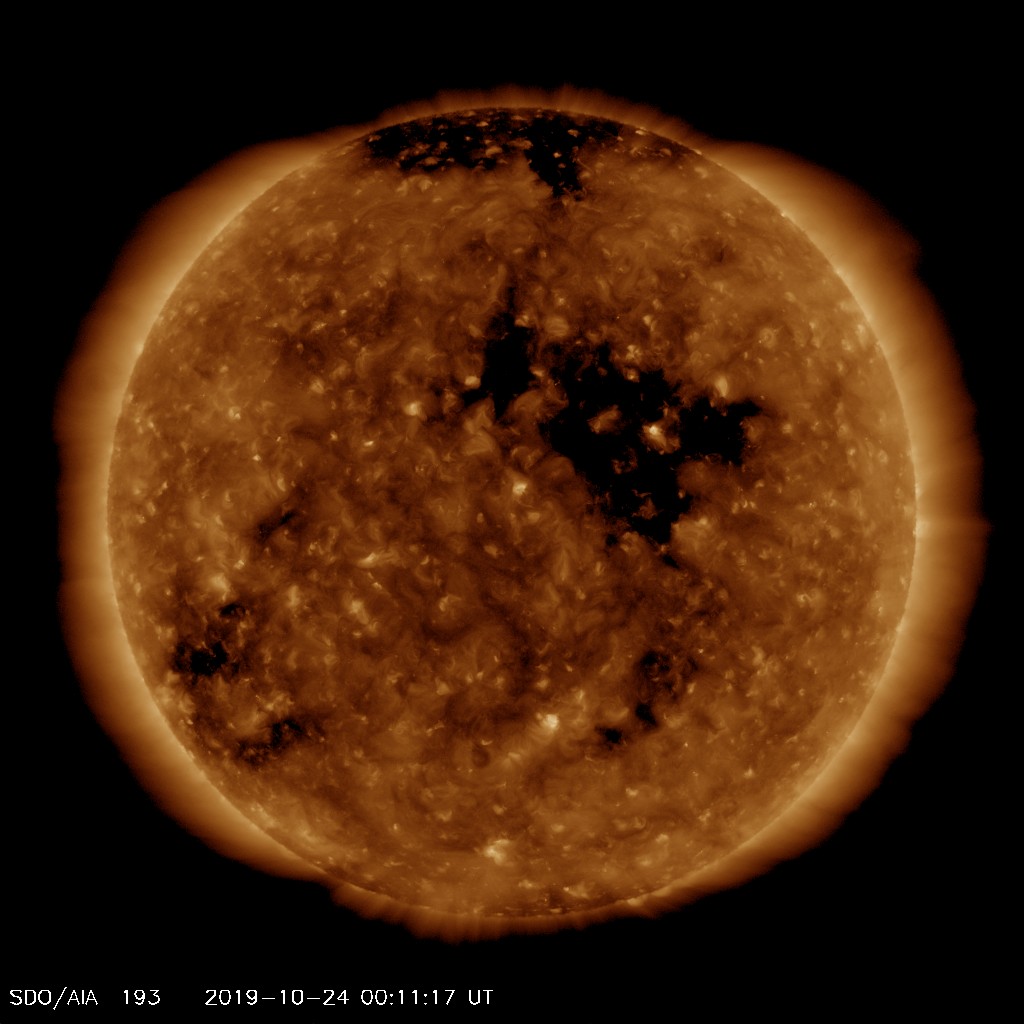Space Weather Alert - 24th October 2019
What Has Happened?
A recurrent, trans-equatorial coronal hole reached an Earth facing position on the 20th of October 2019. The initial arrival of the coronal hole high-speed wind stream is anticipated on Thursday 24th of October. This will cause the geomagnetic activity to increase significantly from ambient levels. (see NOAA space weather scales for more details about these storm levels).
On the previous solar rotation, this coronal hole activity peaked at STORM G1 on the 27th of September. Hence, the Earth may again experience ACTIVE and geomagnetic storm events in the next two days. We cannot rule out the possibility of an isolated STORM G2 event.
Assuming clear, dark skies, there is a greater chance of seeing the aurora over the course of the next two evenings. Those in Scotland, northern England and Northern Ireland have a better chance if the weather is favourable on the 24th of October.
Sign-up to receive Geomagnetic Disturbance Alert emails.
Follow us on Twitter:
Follow @BGSauroraAlert for more occasional aurora alerts.
Follow @BGSspaceWeather for daily space weather forecasts.
Glossary
- BGS
- The British Geological Survey is one of the Natural Environment Research Council's Research Centres.
- Coronal Hole
- A region in the Sun’s outer atmosphere (corona) where hot material can flow unrestrained by its magnetic fields out into space.
- High Speed Stream
- A fast moving stream of solar wind, responsible for magnetic storms.
- Solar Wind
- The ever-present expansion of the Sun’s hot outer atmosphere into the solar system, which carries space weather within it.


